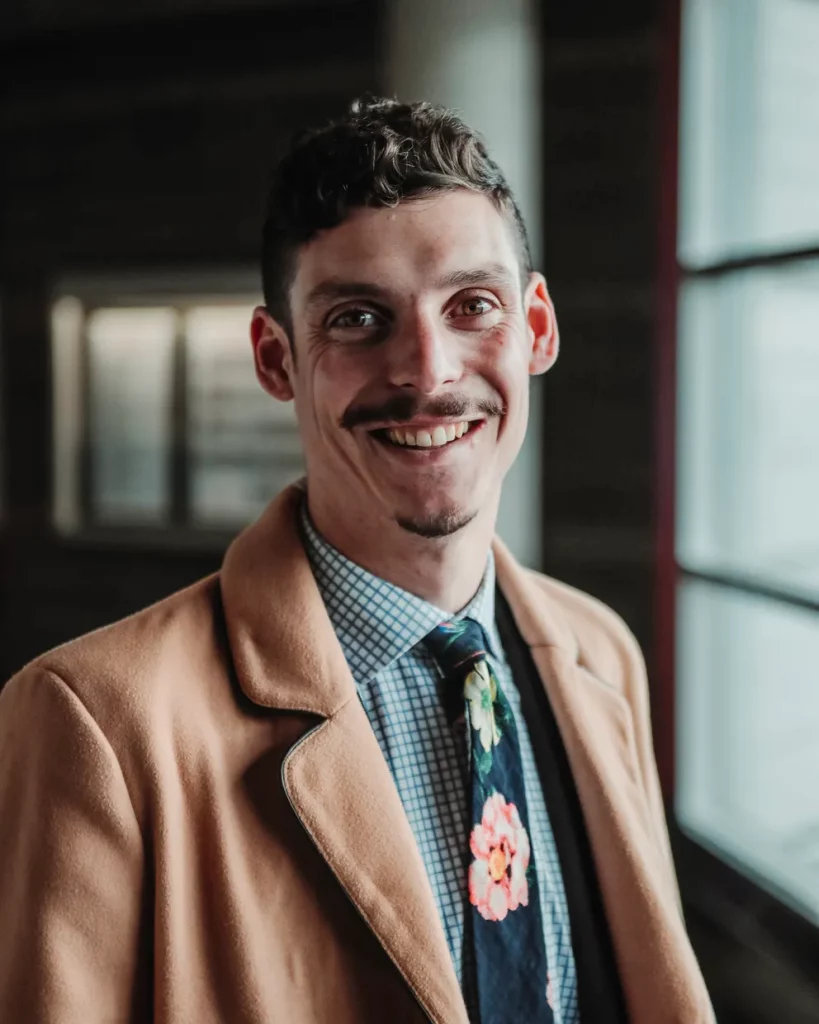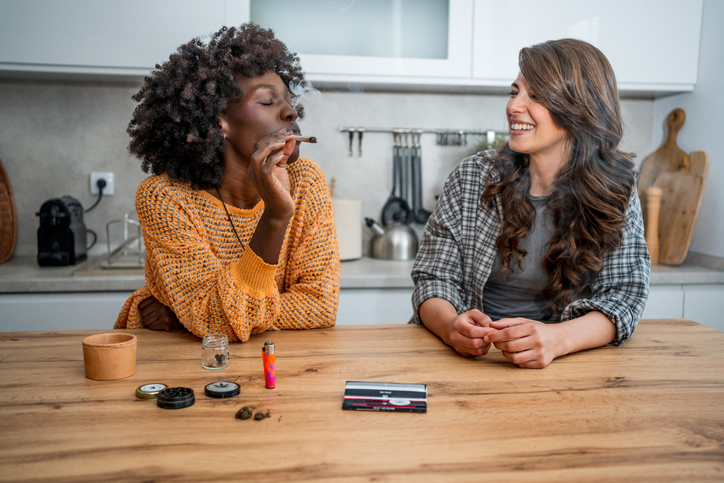Meet Andrew Freedman, The Cannabis Sommelier from Calgary, Canada whose unique approach to pairing cannabis, wine, cocktails and food has led him to presenting cannabis-infused fine dining events across North America. Andrew has been connected to cannabis for many years and is passionate about sharing his knowledge of the plant and its benefits with those who love great food and drink. Seeing the connections between cannabis and wine led him to go through the training to become a sommelier, further honing his ability to describe the various sensory attributes of both cannabis and wine. Andrew is well-versed in discussing terpenes, having authored a book on them entitled, Terpenes for Well-Being.
On Wednesday, July 27, Andrew will be speaking at the American Culinary Federation’s National Convention in Las Vegas, giving a presentation on “Cannabis Beverages: Demystifying Infusions, Pairings, and Service” using SōRSE in his demo. During his session, attendees will learn about cannabis, cannabis infusions, how chefs are using cannabis service in restaurant and event settings, and the importance of diner care when serving infused meals and beverages. SōRSE is proud to be partnering with Andrew on this presentation about elevated dining experiences. For more information on this event, check out the ACF website.
Can you start by sharing your background with us – how you got involved in cannabis, and what inspired you to become The Cannabis Sommelier?
I have been involved with cannabis the majority of my life. When I first found cannabis at a young age, I began self-medicating. Cannabis consumption unlocked an incredible tool in my mind — the ability to think before I spoke. Cannabis gave me the opportunity to form and understand my ideas without getting distracted by the next task at hand. Because of this, I was drawn to the medical aspect of cannabis and learned to grow and extract cannabis.
As a teenager, I was introduced to cannabis activism and began constantly talking to anyone who would listen about the benefits of cannabis, mainly regarding harm reduction and youth cannabis consumption. When I moved to Vancouver to work in brick & mortar cannabis stores long before legalization, I awakened to the depth and complexity of cannabis flavors and aromas, as well as the large commercial scale of cannabis.
Cue moving back to Calgary and seeing a documentary called SOMM. This documentary is about the Master Sommelier program, a highly elite club of wine professionals who can sniff and swirl a wine, taste it, and tell you the exact type of grape, region and year it was made. I knew I needed this knowledge, so I Googled ‘wine course.’ Low and behold, there was a course that Saturday for $420. I took that as a sign I needed to learn how to smell and taste wine and cannabis like the gentleman on my TV screen. When discussing with my wife what I should tell people about why I am taking the class, we decided that I would be the first real cannabis sommelier who would teach people how to pair cannabis and wine. The rest is history.
What kind of training and education have you done to become a sommelier?
I am a WSET 3 (Wine & Spirit Education Trust); I am also a Canadian Wine Scholar. I spent the 2016 vintage living and working on a winery as a winemaker’s apprentice. Others choose to join the Court of Master Sommeliers for their training and accreditation. Technically speaking, you do not need any schooling to become a somm, but you must control a wine program and be part of wine service.
How does your experience working in the wine industry influence the work you do with cannabis?
I saw wine as an opportunity to better understand cannabis on so many levels. Cannabis and wine are basically the same things — from the passionate people, the interesting places, the unique products, all the way down to the shape of a trichome head and a grape. Both are circles with a waxy skin that encompass a plethora of terpenes, esters, and flavonoids. The only difference between the two intoxicants is one has to be fermented and one has to be heated to enjoy their effects.
Wine has such an incredible recorded history. When Noah landed his arc, the first thing he did was plant grape vines. This made me realize that not enough cannabis research and opinion was being documented. Wine also shaped the realities of globalizing an intoxicant to me. It’s incredible that when we walk into liquor stores, we have rows and rows of seemingly the same products imported from all over the world. Yet what wine really taught me was how to accurately and scientifically explain flavors, aroma and quality.
A sommelier’s primary role is educating the customer or consumer. What are some of the common questions you are asked in your role?
There is so much knowledge to be shared about cannabis. From the ground up, most people are confused, just like they are when they shop for a bottle of wine. The most important role I have is my duty of care for the customer, making sure they feel safe and comfortable with their intoxication and not placing them in harm’s way. The first thing I always explain is how intoxication will feel and how cannabis interacts with your body.
Next is “Why can’t I find the right weed for me?” This garners a very simple answer — start low and go slow, and if an experience isn’t enjoyable multiple times over, maybe it just isn’t for you. We all have a unique biology, and no two people’s body chemistries are identical.
“Why does it smell like skunk?” That’s actually 321 MBT, the same chemical found in skunk spray and oxidized beer! Yes, that Heineken actually does smell like weed.
“What is a terpene?” Terpenes are such a hot word right now for marketers, but very little explanation actually gets back to the end consumer. The easiest way to think about terpenes is to see them as the building blocks of aroma; they are single cell molecules each with an individual color. Stack these blocks together into any shape you want to create, and we can consider the finished objects combination of bricks to be an essential oil.
What commonalities do you see between consumers of wine and consumers of cannabis (in terms of product expectation, consumption method, etc.)?
-
What is the feedback you receive from wine consumers when they are introduced to cannabis? Do they understand how they can complement each other?
Wine drinkers are much more receptive to the ideas of cannabis tasting and pairing, and most have usually already been coached on the concept along the way at a wine tasting or wine dinner. Higher price-point wine drinkers are often searching for unique and enticing flavors for their palate. Also, most alcohol consumers already have some relationship with cannabis in their lives.
-
And then the same for cannabis consumers being introduced to a wine or alcohol pairing?
Cannabis consumers are much more difficult; many are non-drinkers, so this creates the first layer — second is the taste of wine. Some can very quickly get over the taste of alcohol and explore the nuances of the drink, but many have a hard time. Cannabis consumers are much more receptive to the agricultural concepts and the relationship between growing and creating the two intoxicants. So where they find less joy in the tasting than a wine consumer, I find they take more out of the general experience of education because of the agricultural connection.
-
Do they feel alcohol and cannabis can play in the same sandbox?
Everyone is receptive to cannabis and alcohol, except for government bodies. In Canada, 1 in 4 people have consumed cannabis in the last 12 months, with over 50% of people having tried cannabis in their lifetime. 80% of Canadians 15 and older have had at least one alcoholic drink a year. The consumption habits are already intermingling. It is now our responsibility to make sure that happens safely and enjoyably.
What goes into creating a cannabis culinary experience for your clients? Specifically, how do you decide what dishes to prepare and what beverages to pair with each dish? What is your favorite dish to serve and beverage to pair with it?
I am fortunate to work with many amazing chefs across North America. My role as The Cannabis Sommelier is to help educate chefs how to safely and effectively introduce cannabis into their cuisine. I generally let the chef I am working with for the event create the menu. It is always best when a chef is inspired to create and then learn a new trick to add another layer of complexity using cannabis. I pair wines with two main concepts in mind – first, a great pairing with the dish, and second, a wonderful story about the wine that can relate back to cannabis. I love introducing people to Lambrusco – it’s a cold, sparkling red wine. It is almost always something nobody has had before and is exceptionally unique. I usually love to serve it with a rich pork dish. Second to that is Champagne and bone marrow; after you clear out the bone, use it as a slide to pour champagne in your mouth and get every last bit of that rich, fatty goodness.
Tell us about your book, “Terpenes for Well-Being.” What inspired you to write about terpenes? What are some of your favorites?
Terpenes for Well-Being is an opportunity to understand what it means when you stop and smell the roses. What are aromas? Why are they surrounding us? What are they made of? Our sense of smell is one we cannot turn off. It is our trusted guide to understanding what we should put in our mouth before we ever even consider it. The book is a great intro into smell, taste, cannabis, and how to utilize them altogether in everyday life. I am super proud that the book won the silver medal at the International Publishers Living Now Awards 2021 in the Health and Wellness category.
Terpinolene and Limonene are my favourite terps! Can’t get enough of fruit aromas!
How does cannabis enhance the meals you create?
Cannabis is so much more than just an intoxicant; it is an ingredient with so much depth to explore. Working with chefs to look at cannabis in creative ways and plate it to be enjoyed is a blast. From deep frying leaves to strain-specific oil infusions, we can highlight the taste and depth of aroma the plant has to offer.
What information about terpenes is your audience most surprised to learn?
People are often surprised to learn that so many things on earth create terpenes for different reasons. Roots, shoots, flowers, trees, and bugs all create different combinations of terpenes for specific, genetically adapted reasons — some anti-bacterial, some insecticidal, some fungicidal. All of the individual evolutionary components of terpenes combine to make that subject’s specific and unique essential oil.
People also love to know that the terpene Humulene was discovered when researching hops and cannabis. An unidentifiable terpene existed until the same tests were run on hops; a matching chemical analysis was found, and the smell and word Humulene were dubbed after the scientific name for hops, Humulus Lupulus.
What excites you most about the cannabis industry right now? Where do you see the industry heading in the future, particularly in the beverage sector?
We are watching the globalization of cannabis unfold! I am a Canadian heading to Las Vegas to speak about safe cannabis consumption in restaurant settings! I imagine the next 5 years will be incredibly exciting for cannabis to be accepted globally. As we watch nations change policy and their stance on cannabis every day, it is so exciting to know that soon we may have dispensaries with rows of cannabis products grown all over the world. I can’t wait to see coolers full of craft cannabis products made by passionate people around the globe. I think Beverage is a leader in the commercialization and globalization of cannabis because of how we already consume and distribute beverages. It can very easily be placed into our routines, normalizing cannabis consumption publicly, rapidly.
How did you become associated with American Culinary Federation? What excites you about their National Convention coming up? What drew you to SōRSE and incorporating it into your cannabis experience?
I was fortunate to meet Jacqui Pressinger of the American Culinary Federation a couple of years ago. Since meeting Jacqui, she has given me such great opportunities to speak to chefs and culinarians about cannabis service and consumption. The ACF is a front runner in cannabis education. I am happy to have helped audit the American Culinary Federation’s Cannabis Cuisine & Edible course and have become one of the first people certified by the ACF in cannabis in the world.
I am so excited to speak alongside the most powerhouse line up of chefs ever! The whole conference is like watching the food network! I am so humbled and honored to speak with such amazing taste makers and pioneers in the culinary industry. I am most excited for Chef Amaury Guichon, the chocolate wizard who you will have seen all over the internet for his incredible displays of pastry or on his Netflix show teaching other pastry artists to build life size sculptures completely made of chocolate.
SōRSE creates incredible products and solutions. As soon as I was able to find commercialized culinary ingredients to help chefs accurately dose dishes, I started highlighting these products and giving chefs the power of duty of care. I work with SōRSE because of their diverse product offering, professionalism, and high industry standing as a leader in cannabis food and beverage.






